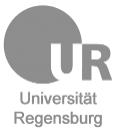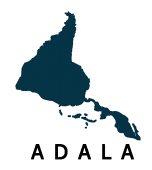Introduction
Community Resilience in Ancient Egypt
DOI:
https://doi.org/10.35305/cl.vi22.133Parole chiave:
Community resilience, Collapse, Climate change, Ancient Egypt, EgyptologyAbstract
This special thematic issue focusses on Community Resilience in Ancient Egypt. Although the subject of resilience has only re-entered the disciplines of the archaeology and history of Northeastern Africa and Western Asia in recent years, its aspects have been explored for several decades via the concept of collapse. This dossier pushes past collapse to consider the changing continuities of communities across different periods of Egypt’s history. Bringing together diverse perspectives from climate change to communities of practice, it aims to spur further discussions and research into the various strategies of adaptation and resilience initiated and experienced by communities of Egypt’s past.
Downloads
Riferimenti bibliografici
Adger, W. Neil, Hughes, Terry P., Folke, Carl, Carpenter, Stephen R. and Rockström, Johan (2005) “Social-ecological resilience to coastal disasters”, Science 309 (5737): 1036-1039. DOI: https://doi.org/10.1126/science.1112122
D’Alfonso, Lorenzo (2023) “Resilience theory, human agency, and political archaeology: A RT revised model for the understanding of the Late Bronze – Iron Age transition in the post-Hittite world”, Journal of Ancient Near Eastern History 11. DOI: https://doi.org/10.1515/janeh-2023-0001 DOI: https://doi.org/10.1515/janeh-2023-0001
Bárta, Miroslav (2014) “Collapse hidden in success: Rise & fall of the Old Kingdom”, Kmt 25 (1): 18-28.
Bárta, Miroslav (2019) Analyzing collapse: The rise and fall of the Old Kingdom. Cairo: American University in Cairo Press. DOI: https://doi.org/10.2307/j.ctv2ks71gr
Bell, Barbara (1971) “The dark ages in ancient history. I. The first dark age in Egypt”, American Journal of Archaeology 74 (1): 1-26. DOI: https://doi.org/10.2307/503678
Berkes, Fikret and Ross, Helen (2013) “Community resilience: Toward an integrated approach”, Society and Natural Resources 26 (1): 5-20. DOI: https://doi.org/10.1080/08941920.2012.736605
Bietak, Manfred (1996) Avaris: The capital of the Hyksos. Recent excavations at Tell el-Dabˁa. London: British Museum Press.
Bietak, Manfred (2010) “Houses, palaces and development of social structure in Avaris”, in: Bietak, M.; Czerny, E. and Forstner-Müller, I. (eds.), Cities and urbanism in ancient Egypt. Papers from a workshop in November 2006 at the Austrian Academy of Sciences. Denkschriften der Gesamtakademie 60, Unteruschungen der Zweigstelle Kairo des Österreichischen Archäologischen Instituts 35. Vienna: Österreichische Akademie der Wissenschaften, pp. 11-68.
Bogaard, Amy; Filipović, Dragana; Fairbairn, Andrew; Green, Laura; Stroud, Elizabeth; Fuller, Dorian and Charles, Michael (2017) “Agricultural innovation and resilience in a long-lived early farming community: The 1,500-year sequence at Neolithic to early Chalcolithic Çatalhöyük, central Anatolia”, Anatolian Studies 67: 1-28. DOI: https://doi.org/10.1017/S0066154617000072
Bradtmöller, Marcel; Grimm, Sonjia and Riel-Salvatore, Julien (2016) “Resilience theory in archaeological practice – An annotated review”, Quaternary International 446: 3-16. DOI: https://doi.org/10.1016/j.quaint.2016.10.002
Burn, John W. (2021) A River in ‘Drought’? Environment and cultural ramifications of Old Kingdom Climate Change. Oxford: BAR Publishing.
Butzer, Karl W. (2012) “Collapse, environment, and society”, Proceedings of the National Academy of Sciences of the United States of America 109 (10): 3632-3639. DOI: https://doi.org/10.1073/pnas.1114845109
Butzer, Karl W. and Endfield, Georgina, H. (2012) “Critical perspectives on historical collapse”, Proceedings of the National Academy of Sciences of the United States of America 109 (10): 3628-3631. DOI: https://doi.org/10.1073/pnas.1114772109
Callender, Gae (2000) “The Middle Kingdom renaissance (c. 2055–1650 BC)”, in: Shaw, I. (ed.), The Oxford history of ancient Egypt. New York: Oxford University Press, pp. 137-171. DOI: https://doi.org/10.1093/oso/9780198150343.003.0006
Canuto, Marcello A. and Yaeger, Jason (2000) The archaeology of communities. A New World perspective. New York: Routledge.
Delanty, Gerard (2003) Community. London: Routledge.
Faulseit, Ronald K (2016) “Collapse, resilience, and transformation in complex societies: Modeling trends and understanding diversity”, in: Faulseit, R.K. (ed.), Beyond collapse. Archaeological perspectives on resilience, revitalization and transformation in complex societies. Center for Archaeological Investigations, Occasional Paper No. 42. Carbondale: Southern Illinois University Press, pp. 3-26.
Grajetzki, Wolfram (2006) The Middle Kingdom of ancient Egypt: History, archaeology and society. London: Duckworth.
Gunderson, Lance H. (2000) “Ecological resilience-In theory and application”, Annual Review of Ecology and Systematics 31: 425-439. DOI: https://doi.org/10.1146/annurev.ecolsys.31.1.425
Haldon, John and Rosen, Arlene (2018) “Society and environment in the East Mediterranean ca 300–1800 CE. Problems of resilience, adaptation and transformation. Introductory essay”, Human Ecology 46: 275-290. DOI: https://doi.org/10.1007/s10745-018-9972-3
Heitz, Caroline; Hinz, Martin; Laabs, Julian and Hafner, Albert (2021) “Mobility as resilience capacity in northern Alpine Neolithic settlement communities”. Archaeological Review from Cambridge 36 (1): 75-105.
Holling, C.S. (1973) “Resilience and stability of ecological systems”, Annual Review of Ecology and Systematics 4: 1-23. DOI: https://doi.org/10.1146/annurev.es.04.110173.000245
Holling, C.S. and Gunderson, Lance H. (2002) “Resilience and adaptive cycles”, in: Gunderson, L.H. and Holling, C.S. (eds.), Panarchy: Understanding transformations in human and natural systems. Washington, DC: Island Press, pp. 25-62.
Jacobson, Matthew J. (2022) “Archaeological evidence for community resilience and sustainability: A bibliometric and quantitative review”, Sustainability 14 (24): e16591. DOI: https://doi.org/10.3390/su142416591
Kanawati, Naguib and Swinton, Joyce (2018) Egypt in the Sixth Dynasty. Challenges and responses. Wallasey: Abercromby Press.
Kemp, Luke and Cline, Eric H. (2022) “Systemic risk and resilience: The Bronze Age collapse and recovery”, in: Izdebski, A.; Haldon, J. and Filipkowski, P. (eds.), Perspectives on public policy in socio-environmental crises: What the future needs from history. Cham: Springer, pp. 207-223. DOI: https://doi.org/10.1007/978-3-030-94137-6_14
Kuecker, Glen D. and Hall, Thomas D. (2011) “Resilience and community in the age of world-system collapse”, Nature and Culture 6 (1): 18-40. DOI: https://doi.org/10.3167/nc.2011.060102
Kuecker, Glen D.; Mulligan, Martin and Nadarajah, Yaso (2010) “Turning to community in times of crisis: Globally derived insights on local community formation”, Community Development Journal 46 (2): 245-264. DOI: https://doi.org/10.1093/cdj/bsq002
Lave, Jean and Wenger, Etienne (1991) Situated learning: Legitimate peripheral participation. Cambridge: Cambridge University Press. DOI: https://doi.org/10.1017/CBO9780511815355
Løvschal, Mette (2022) “Retranslating resilience theory in archaeology”, Annual Review of Anthropology 51: 195-211. DOI: https://doi.org/10.1146/annurev-anthro-041320-011705
McAnany, Patricia A. and Yoffee, Norman (2010) “Why we question collapse and study human resilience, ecological vulnerability, and the aftermath of empire”, in: McAnany, P. and Yoffee, N. (eds.), Questioning collapse: Human resilience, ecological vulnerability and the aftermath of empire. Cambridge: Cambridge University Press, pp. 1-17. DOI: https://doi.org/10.1017/CBO9780511757815.002
Middleton, Guy D. (2017) “The show must go on: Collapse, resilience, and transformation in 21st-Century archaeology”, Reviews in Anthropology 46 (2-3): 78-105. DOI: https://doi.org/10.1080/00938157.2017.1343025
Moreno García, Juan Carlos (2015) “Climatic change or sociopolitical transformation? Reassessing late 3rd Millennium BC in Egypt”, in: Meller, H.; Arz, H.W.; Jung, R. and Risch, R. (eds.), 2200 BC – A climatic breakdown as a cause for the collapse of the Old World? 7th archaeological conference of central Germany, October 23–26, 2014 in Halle (Saale). Tagungen des Landesmuseums für Vorgeschichte Halle 13. Halle: Landesamt für Denkmalpflege und Archäologie Sachsen-Anhalt, Landesmuseum für Vorgeschichte, pp. 79-94.
Moreno García, Juan Carlos (2021) “Climate, state building and political change in Egypt during the Early Bronze Age: A direct relation?”, in: Erdkamp, P.; Manning, J.G. and Verboven, K. (eds.), Climate Change and ancient societies in Europe and the Near East. Palgrave Studies in Ancient Economies. Cham: Palgrave Macmillan, pp. 201-213. DOI: https://doi.org/10.1007/978-3-030-81103-7_6
Mourad, Anna-Latifa (2021a) “Strategies of survival? Change, continuity and the adaptive cycle across the Middle to early Late Bronze Age at Tell el-Dabˁa, Egypt”, Journal of Anthropological Archaeology: 101367. DOI: https://doi.org/10.1016/j.jaa.2021.101367 DOI: https://doi.org/10.1016/j.jaa.2021.101367
Mourad, Anna-Latifa (2021b) The enigma of the Hyksos. Volume II: Transforming Egypt into the New Kingdom. The impact of the Hyksos and Egyptian-Near Eastern relations. Contributions to the Archaeology of Egypt, Nubia and the Levant 10. Wiesbaden: Harrassowitz Verlag. DOI: https://doi.org/10.13173/9783447115902
Nelson, Margaret C.; Hegmon, Michelle; Kulow, Stephanie and Schollmeyer, Karen G. (2006) “Archaeological and ecological perspectives on reorganization: A case study from the Mimbres Region of the U.S. Southwest”, American Antiquity 71 (3): 403-432. DOI: https://doi.org/10.1017/S0002731600039755
Norris, Fran H.; Stevens, Susan P.; Pfefferbaum, Betty; Wyche, Karen F. and Pfefferbaum, Rose L. (2008) “Community resilience as a metaphor, theory, set of capacities, and strategy for disaster readiness”, American Journal of Community Psychology 41: 127-150. DOI: https://doi.org/10.1007/s10464-007-9156-6
Pearson, Leonie J. and Pearson, Craig J. (2012) “Societal collapse or transformation, and resilience”, Proceedings of the National Academy of Sciences of the United States of America 109 (30): E2030-E2031. DOI: https://doi.org/10.1073/pnas.1207552109
Quirke, Stephen (1991) “Royal power in the 13th Dynasty”, in: Quirke, S. (ed.) Middle Kingdom studies. New Malden: SIA, pp. 123-139.
Redman, Charles L. (2005) “Resilience theory in archaeology”, American Anthropologist 107 (1): 70-77. DOI: https://doi.org/10.1525/aa.2005.107.1.070
Redman, Charles L. (2014) “Should sustainability and resilience be combined or remain distinct pursuists”, Ecology and Society 19 (2): 37. DOI: https://doi.org/10.5751/ES-06390-190237
Redman, Charles L. and Kinzig, Ann P. (2003) “Resilience of past landscapes: Resilience theory, society, and the longue durée”, Conservation Ecology 7 (1): 14. DOI: https://doi.org/10.5751/ES-00510-070114
Rosen, Arlene M. and Rivera-Collazo, Isabel (2012) “Climate change, adaptive cycles, and the persistence of foraging economies during the late Pleistocene/Holocene transition in the Levant”, Proceedings of the National Academy of Sciences of the United States of America 109 (10): 3640-3645. DOI: https://doi.org/10.1073/pnas.1113931109
Schoon, Michael; Fabricius, Christo; Anderies, John M. and Nelson, Margaret (2011) “Synthesis: Vulnerability, traps, and transformations – Long-term perspectives from archaeology”, Ecology and Society 16 (2): 24. DOI: https://doi.org/10.5751/ES-04184-160224
Seidlmayer, Stephan J. (1990) Gräberfelder aus dem Übergang vom Alten zum Mittleren Reich: Studien zur Archäologie der Ersten Zwischenzeit. Heidelberg: Heidelberger Orientverlag.
Siesse, Julien (2019) La XIIIe dynastie: histoire de la fin du Moyen Empire égyptien. Paris: Presse de l’Université Paris- Sorbonne.
Walker, Brian H. and Salt, David (2006) Resilience thinking: Sustaining ecosystems and people in a changing world. Washington, DC: Island Press.
Weiberg, Erika and Finné, Martin (2022) “Human-environment dynamics in the ancient Mediterranean. Keywords of a research field”, Opuscula. Annual of the Swedish Institutes at Athens and Rome 15: 221-252. DOI: https://doi.org/10.30549/opathrom-15-07
Wenger, Etienne (1998) Communities of practice: Learning, meaning, and identity. Cambridge: Cambridge University Press. DOI: https://doi.org/10.1017/CBO9780511803932
Willems, Harco (2013) “Nomarchs and local potentates: The provincial administration in the Middle Kingdom”, in: Moreno García, J.C. (ed.), Ancient Egyptian administration. Leiden/Boston: Brill, pp. 341-392. DOI: https://doi.org/10.1163/9789004250086_011
Willems, Harco (2014) Historical and archaeological aspects of Egyptian funerary culture: Religious ideas and ritual practice in Middle Kingdom elite cemeteries. Leiden: Brill. DOI: https://doi.org/10.1163/9789004274990
Willems, Harco (2022) “Egypt’s Middle Kingdom: A view from within”, in: Radner, Karen; Moeller, Nadine and Potts, Daniel T. (eds.), The Oxford history of the ancient Near East. Volume II: From the end of the Third Millennium BC to the fall of Babylon. New York: Oxford University Press, pp. 656-727. DOI: https://doi.org/10.1093/oso/9780190687571.003.0019
Winter, Matthew A. (2023) “Towards a model for sociocultural transformation: Anthropocentric approaches to resilience, collapse, and resistance”, Journal of Ancient Near Eastern History 11. DOI: https://doi.org/10.1515/janeh-2022-0012 DOI: https://doi.org/10.1515/janeh-2022-0012
##submission.downloads##
Pubblicato
Come citare
Fascicolo
Sezione
Licenza

Questo lavoro è fornito con la licenza Creative Commons Attribuzione - Non commerciale - Condividi allo stesso modo 4.0 Internazionale.

















 Centro de Estudios sobre Diversidad Cultural
Centro de Estudios sobre Diversidad Cultural

